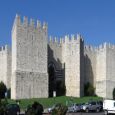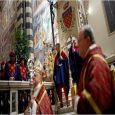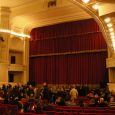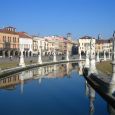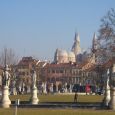Prato
Advertisement
By Air
The main international airport facilities or intercontinental cities are closer to Florence-Peretola (12 km), Pisa-San Giusto (approximately 95 km), Bologna-Ducati (100 km), Rome-Fiumicino (about 340 km) and Malpensa airport (350 km).
By Train
The city of Prato is crossed by two railway lines are the railway Maria Antonia and the Florence-Bologna.The first is a regional line that connects Florence and Tuscany, while the second is the western part of the backbone Milan-Naples and one of the most important Italian railway lines. Prato is then served by some long-distance trains like the Intercity and Eurostar direct to the north and south of the peninsula.
By Bus
Urban transport Prato consist of a series of bus routes operated by Zip code which also serves the province.The active lines are in total 11, including those that connect with LAM frequencies ranging from seven to fifteen minutes to the city center, the surrounding areas and suburbs.
By Road
Meadow is served by two exits from the A11 Prato Prato east and west, and is connected to Bologna via Highway 325 in Val di Setta and Bisenzio Valley, which connects with the towns of the Val di Bisenzio (Vaiano Vernio and Cantagallo, in the province of Prato) and Val di Setta (falls within the province of Bologna).
Contemporary Festival
is an international festival of contemporary drama that takes place in Prato and Montemurlo between late September and early October.Contemporary festival was born in Prato in 1999 with the intention to turn a blind eye to the contemporary theater, to research and experiment, without neglecting the role of social deviance recovery.Over time he developed a particular focus on the creative process and to work in progress.The calendar is full of shows, performances, installations and events including theater, dance, visual arts and music.Also present are the first national Italian and foreign companies, projects, site-specific and meetings between artists, professionals and the public that make the festival an active participant in international creative and theatrical distribution.The festival "invades all the cities, involving almost all the scenic areas and more: Metastasio, Fabbricone, Magnolfi Youth Workshop, Library Banti, Bigonge Loggia, the Sala Banti and fulling mill in Montemurlo." From 1999 to 2007 the festival has been held every two years.Since 2007 it has become an annual basis.
Praetorian Palace
is the old Town Hall Lawn located in the town square in front of the current Town Hall site of the Museum (closed since March 1998 restoration, the works are on display at the nearby Museum of Wall Painting ).The building in its current form, was born at the turn of the thirteenth and fourteenth century by the merger of three separate buildings, the local processing of which were created to house the offices of mayor, the judiciary and local prisons.Towards the end of the nineteenth century it was proposed the demolition, but in 1909 the project was abandoned and it was decided to restore the building, bringing the rooms to look like the origin.The Grand Duke Peter Leopold of Lorraine in 1788 expressed the intention of creating a school of taste for future artists, which led to the creation in 1858 of a first collection, originally housed in the nearby Town Hall.Since 1912 in the rooms of the Praetorian Palace houses the Civic Museum which contains many works of art ranging from medieval times to the nineteenth century.
The Textile Museum
is located in Prato in Via Santa Chiara 24, and is one of the most important national and European level on the history and development of weaving from ancient times to present day.The first nucleus of the museum was founded in 1975 thanks to the donation of a body of tissues of the XIV - XIX century by the private collector to Loriano Bertini Tullio Buzzi Technical Institute a school for the training of experts chemical, textile and mechanical.The school has housed the collections until 1997 when he inaugurated the new premises in the town square where the museum has done its work until April 2003 . Since 1975 the textile collections, thanks to acquisitions textile institute alumni association has grown up to the current assets, which today is of absolute importance internationally.The art of textile manufacturing era is documented early Christian to this day in the various techniques of execution, for a total of about six thousand pieces. Complement the heritage of the museum a collection of books, a collection of 800 fashion plates, equipment, samples of chemical dyeing and weaving preparation tools from various periods.Currently, the Textile Museum is managed by a foundation established by the town of Prato, Prato province , Industrial Union, Cariprato, Chamber of Commerce, Industry, Agriculture and Crafts.In another part of the complex is expected to be housed the town library and related services.
Museum Mural
is located in Prato in Piazza San Domenico, near the church of San Domenico . Since the late 90s, with an exhibition called Treasures of the city, is the largest exhibition center in the city where citizens have been fed all the masterpieces of ancient art, evidence from the Civic Museum (Prato) (closed for reorganization) and the Museo dell'Opera del Duomo .Admission to the museum by a door that enters the elegant cloister of the church. Originally the museum was born as an exhibition devoted to frescoes and preparatory drawings from the collections of the diocesan. They are part of the original core of the museum and a Madonna with child sinopias Tabernacle Figline attributed to Agnolo Gaddi , a marble relief of John D'Agostino with 'Annunciation ( 1340 ), a triptych by Antonio da Miniato and the sinopias Paolo Uccello's frescoes for the Cathedral of Prato .Among the works from provenuienti Museum (Prato) are particularly significant to the dais with the Stories of the Sacred Girdle of Bernardo Daddi ( 1388 ), the Madonna of the strain of Filippo Lippi , the altarpiece of the Madonna and Saints by Giovanni da Milano and table of Lorenzo Monaco.
Planetary Science Museum
is located in Prato , is dedicated to ' astronomy , the planetary sciences and mineralogy.The museum was founded on the initiative of the Province of Prato in collaboration with several national and international scientific bodies, including the Geophysics Institute of Tuscany and the 'University of Florence , Prato and is maintained by the Research Foundation.The museum follows the evolutionary history of the 'Universe from its birth to the formation of the Solar System.The theme is illustrated with a representation of the Milky Way and the scale model of the planets, accompanied by explanatory pictures and movies.The tour continues with the exhibition, in six sections, of a part of two important collections housed by the museum collecting 400 samples of meteorites, impacted , and tektites and about 4100 minerals.Of particular scientific interest originated some objects on the moon and Mars and fell on the earth, and metal Nantan meteorite the largest in Italy.A section of the museum is dedicated to the study of astronomy of Galileo Galilei illustrated by simple interactive experiments and space exploration, with a virtual reconstruction of the International Space Station.
Theater Metastasio
is the theater stable Tuscany and is based in Prato.The birth of the theater is tied to the initiative of the notary Metastasio in Prato Benedict Cecconi that in 1820 he promoted an initiative to build a new theater in Prato to replace the old Theatre of Simple judged to be more responsive to the new demand from prosperous middle classes and popular town of Tuscany.After a few design problems both in finding that the area, the story is released in the late twenties with the task of the project given the proven definitively Florentine architect Luigi De Cambray Digny and the work began in March 1829.The theater was built quickly and was inaugurated the ' October 8th 1830 with the ' Aureliano in Palmira of Rossini.The theater presented a particular semicircular facade built in the corners because it follows the course of the main road to avoid a different orientation, which would envisage the entry of more narrow alleys and streets.
Politeama Theatre
is a theater of Prato.The theater stands on the beginning of last century the famous football player Prato Bruno Banchini was used as outdoor arena shows for film , theater and entertainment. Acquired other properties in the area between the streets and Dyers Garibaldi, the Banchini, on the eve of the Great War, conceived the idea of turning the arena into a Politeama entrusting the project architect Emilio Andre.But the execution of the work proceeded slowly even after financial problems: in 1916 was completed the steps around the audience in 1917 the old practice was transformed into a large stage, which in 1918 hosted the setting of the operetta The pills the devil, in 1920 the huge amphitheater saw also completed the proscenium and longboats.Finally, in the first half of the twenties it laid the groundwork for solving the problem of covering the large arena built using the study nerves and Misty of Rome .
January - May
September - December


